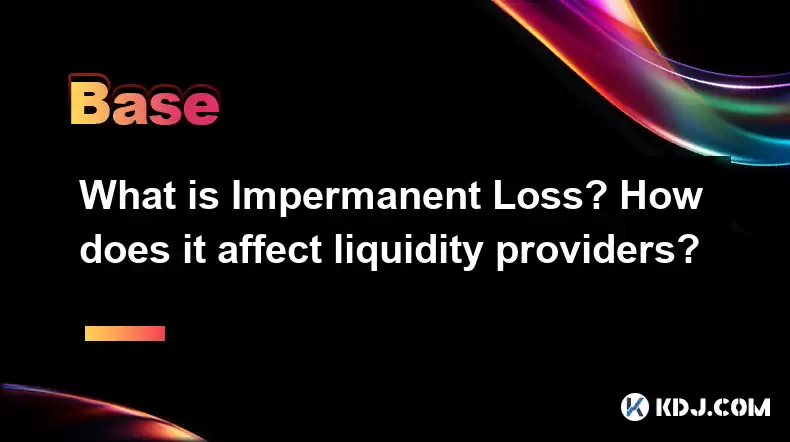-
 Bitcoin
Bitcoin $115100
1.27% -
 Ethereum
Ethereum $3675
2.71% -
 XRP
XRP $2.995
1.45% -
 Tether USDt
Tether USDt $1.000
0.02% -
 BNB
BNB $769.8
2.64% -
 Solana
Solana $168.0
3.25% -
 USDC
USDC $0.9999
-0.01% -
 TRON
TRON $0.3371
1.48% -
 Dogecoin
Dogecoin $0.2051
3.36% -
 Cardano
Cardano $0.7394
2.30% -
 Hyperliquid
Hyperliquid $38.15
0.42% -
 Stellar
Stellar $0.3966
-0.36% -
 Sui
Sui $3.486
2.93% -
 Chainlink
Chainlink $16.72
2.52% -
 Bitcoin Cash
Bitcoin Cash $568.0
4.36% -
 Hedera
Hedera $0.2440
2.59% -
 Ethena USDe
Ethena USDe $1.001
0.04% -
 Avalanche
Avalanche $22.16
2.06% -
 Litecoin
Litecoin $119.1
-0.73% -
 UNUS SED LEO
UNUS SED LEO $8.991
0.04% -
 Toncoin
Toncoin $3.232
-0.39% -
 Shiba Inu
Shiba Inu $0.00001233
2.82% -
 Uniswap
Uniswap $9.717
2.53% -
 Polkadot
Polkadot $3.664
1.85% -
 Dai
Dai $1.000
0.01% -
 Monero
Monero $281.2
-3.89% -
 Bitget Token
Bitget Token $4.350
1.55% -
 Cronos
Cronos $0.1428
5.07% -
 Pepe
Pepe $0.00001050
3.68% -
 Aave
Aave $262.3
3.54%
What is Impermanent Loss? How does it affect liquidity providers?
Impermanent loss (IL) on DEXs results from price fluctuations in liquidity pool assets, potentially reducing value compared to holding assets individually. Trading fees compensate for IL, but may not always fully offset the loss, making risk assessment crucial for liquidity providers.
Mar 06, 2025 at 05:18 am

Key Points:
- Impermanent loss (IL) is the difference between holding assets individually versus providing liquidity in a decentralized exchange (DEX).
- IL arises from price fluctuations of the asset pair in a liquidity pool.
- The magnitude of IL depends on the price volatility and the time the assets are locked in the pool.
- Liquidity providers (LPs) earn trading fees to offset IL, but these fees might not always fully compensate for the loss.
- Understanding IL is crucial for LPs to make informed decisions about risk management.
What is Impermanent Loss?
Impermanent loss (IL) is a concept unique to decentralized exchanges (DEXs) that utilize automated market makers (AMMs). Unlike traditional exchanges with order books, AMMs rely on liquidity pools – collections of tokens locked by users to facilitate trades. When you provide liquidity to an AMM, you essentially commit your assets to a shared pool. The value of your share in the pool depends on the ratio of the two assets within the pool.
How does Impermanent Loss Occur?
IL occurs when the price ratio of the two assets in the liquidity pool changes compared to when you initially deposited them. Let's say you provide equal value of Token A and Token B. If the price of Token A significantly increases relative to Token B, the AMM will automatically rebalance the pool to maintain a 50/50 ratio by value. This means you will end up with more of Token B and less of Token A than you initially deposited. The difference between holding your initial assets and your share of the pool after the price change is the impermanent loss. It’s called "impermanent" because if the prices return to their original ratio, the loss disappears.
Factors Influencing Impermanent Loss:
Several factors significantly influence the amount of impermanent loss experienced. The most significant is the price volatility of the asset pair. Higher volatility leads to more significant rebalancing and, thus, larger potential IL. The duration of your liquidity provision also matters; longer periods expose you to greater price fluctuations and a larger potential IL. The initial ratio of your deposited assets also plays a role; a highly skewed ratio might lead to amplified IL in certain price movements.
How does Impermanent Loss Affect Liquidity Providers?
For liquidity providers (LPs), IL represents a potential loss of value compared to simply holding the assets individually. However, it’s not always a net loss. LPs receive trading fees generated from transactions within the liquidity pool as compensation. These fees accumulate over time and can offset, or even exceed, the impermanent loss. Whether the trading fees are sufficient to compensate for IL depends on the volume of trading activity, the fee structure of the DEX, and the price volatility of the asset pair.
Calculating Impermanent Loss:
Calculating the exact impermanent loss requires understanding the mathematical formula used by AMMs. While complex, simpler estimations are available online through calculators. These calculators usually require the initial investment ratio and the final price ratio of the assets to estimate the IL. Several websites and tools offer these calculators, allowing LPs to simulate various scenarios and understand potential risks before providing liquidity.
Minimizing Impermanent Loss:
There are no foolproof methods to completely eliminate impermanent loss, but LPs can employ strategies to mitigate the risk. One strategy is to choose less volatile asset pairs. The lower the price fluctuations, the less frequent the rebalancing and thus, the lower the potential IL. Another approach is to provide liquidity for shorter periods, reducing exposure to significant price swings. However, shorter periods might mean less accumulation of trading fees. Careful selection of the DEX and understanding its fee structure is also crucial, as higher fees can offset potential IL more effectively.
Impermanent Loss vs. Realized Loss:
It's crucial to distinguish between impermanent loss and realized loss. Impermanent loss is unrealized; it only becomes a realized loss when the LPs withdraw their liquidity from the pool. If the prices of the assets revert to their original ratio at the time of withdrawal, the impermanent loss disappears, and the LP only experiences any net gain or loss from accumulated trading fees. However, if the price ratio remains unfavorable, the impermanent loss becomes a realized loss upon withdrawal.
The Role of Trading Fees in Compensating for Impermanent Loss:
Trading fees are the primary mechanism through which LPs are compensated for the risk of impermanent loss. The higher the trading volume in the pool, the greater the trading fees generated. These fees are distributed proportionally among the LPs based on their share of the pool. DEXs often have varying fee structures, so comparing fees across different platforms is essential before deciding where to provide liquidity. The overall profitability of providing liquidity depends on the balance between earned trading fees and any impermanent loss incurred.
Understanding Risk Tolerance:
Understanding your risk tolerance is vital before providing liquidity. IL is an inherent risk in AMM-based liquidity provision. If you're risk-averse, you might prefer to hold assets individually rather than participate in liquidity pools. Conversely, those with higher risk tolerance might find the potential for significant trading fee earnings outweighs the risk of impermanent loss, especially in pools with high trading volume. Thorough research and understanding of the potential risks involved are essential for informed decision-making.
Step-by-Step Guide to Understanding Your Potential Impermanent Loss (Simplified):
- Step 1: Note Initial Investment: Record the amount of each token you are providing to the liquidity pool and its value at the time of deposit.
- Step 2: Track Price Changes: Monitor the price fluctuations of both tokens in your chosen pair.
- Step 3: Use an Impermanent Loss Calculator: Input the initial investment details and the current price of each token into an online IL calculator.
- Step 4: Analyze Results: The calculator will show your potential impermanent loss, illustrating the difference between holding your tokens individually versus providing liquidity.
- Step 5: Consider Trading Fees: Factor in the trading fees earned during the liquidity provision period to assess your overall net profit or loss.
Frequently Asked Questions:
Q: Can impermanent loss ever exceed 100%?
A: Theoretically, impermanent loss can't exceed 100%. The worst-case scenario is when one token goes to zero, resulting in a total loss of the investment in that token. However, the remaining token's value would still exist.
Q: Is impermanent loss always a bad thing?
A: Not necessarily. High trading fees can offset and even exceed the impermanent loss, resulting in a net profit for the liquidity provider. The key is to balance the potential for IL against the potential for earning significant trading fees.
Q: How can I avoid impermanent loss completely?
A: There's no guaranteed way to completely avoid impermanent loss. The only sure way is to not provide liquidity to AMMs.
Q: What are some good resources for learning more about impermanent loss?
A: Numerous online resources, including articles, blog posts, and videos, cover impermanent loss in detail. Many DeFi platforms also provide educational materials on the topic.
Q: Are there any strategies to reduce the impact of impermanent loss?
A: Yes, selecting less volatile asset pairs and providing liquidity for shorter periods can help mitigate the risk. However, these strategies may also reduce the potential for earning trading fees.
Disclaimer:info@kdj.com
The information provided is not trading advice. kdj.com does not assume any responsibility for any investments made based on the information provided in this article. Cryptocurrencies are highly volatile and it is highly recommended that you invest with caution after thorough research!
If you believe that the content used on this website infringes your copyright, please contact us immediately (info@kdj.com) and we will delete it promptly.
- BlockDAG, Litecoin, and Cardano: Charting the Course in Crypto's Dynamic Waters
- 2025-08-07 09:09:06
- Fireverse Token: Igniting a Musical Revolution in Web3
- 2025-08-07 08:27:45
- Ethereum, L2 Withdrawals, and Decentralization: A New Yorker's Take
- 2025-08-07 08:32:33
- Avalanche vs. Ruvi AI: Daily Sales Tell a Story of Crypto Disruption
- 2025-08-07 06:29:35
- DeSoc: The Crypto to Buy Now for a Decentralized Future (and Maybe 43x Gains!)
- 2025-08-07 06:50:16
- Arctic Pablo Coin: Riding the Meme Coin Wave with a Deflationary Twist
- 2025-08-07 07:18:13
Related knowledge

What is the difference between CeFi and DeFi?
Jul 22,2025 at 12:28am
Understanding CeFi and DeFiIn the world of cryptocurrency, CeFi (Centralized Finance) and DeFi (Decentralized Finance) represent two distinct financia...

How to qualify for potential crypto airdrops?
Jul 23,2025 at 06:49am
Understanding What Crypto Airdrops AreCrypto airdrops refer to the distribution of free tokens or coins to a large number of wallet addresses, often u...

What is a crypto "airdrop farmer"?
Jul 24,2025 at 10:22pm
Understanding the Role of a Crypto 'Airdrop Farmer'A crypto 'airdrop farmer' refers to an individual who actively participates in cryptocurrency airdr...

What is the difference between a sidechain and a Layer 2?
Jul 20,2025 at 11:35pm
Understanding the Concept of SidechainsA sidechain is a separate blockchain that runs parallel to the main blockchain, typically the mainnet of a cryp...

What is the Inter-Blockchain Communication Protocol (IBC)?
Jul 19,2025 at 10:43am
Understanding the Inter-Blockchain Communication Protocol (IBC)The Inter-Blockchain Communication Protocol (IBC) is a cross-chain communication protoc...

How does sharding improve scalability?
Jul 20,2025 at 01:21am
Understanding Sharding in BlockchainSharding is a database partitioning technique that is increasingly being adopted in blockchain technology to enhan...

What is the difference between CeFi and DeFi?
Jul 22,2025 at 12:28am
Understanding CeFi and DeFiIn the world of cryptocurrency, CeFi (Centralized Finance) and DeFi (Decentralized Finance) represent two distinct financia...

How to qualify for potential crypto airdrops?
Jul 23,2025 at 06:49am
Understanding What Crypto Airdrops AreCrypto airdrops refer to the distribution of free tokens or coins to a large number of wallet addresses, often u...

What is a crypto "airdrop farmer"?
Jul 24,2025 at 10:22pm
Understanding the Role of a Crypto 'Airdrop Farmer'A crypto 'airdrop farmer' refers to an individual who actively participates in cryptocurrency airdr...

What is the difference between a sidechain and a Layer 2?
Jul 20,2025 at 11:35pm
Understanding the Concept of SidechainsA sidechain is a separate blockchain that runs parallel to the main blockchain, typically the mainnet of a cryp...

What is the Inter-Blockchain Communication Protocol (IBC)?
Jul 19,2025 at 10:43am
Understanding the Inter-Blockchain Communication Protocol (IBC)The Inter-Blockchain Communication Protocol (IBC) is a cross-chain communication protoc...

How does sharding improve scalability?
Jul 20,2025 at 01:21am
Understanding Sharding in BlockchainSharding is a database partitioning technique that is increasingly being adopted in blockchain technology to enhan...
See all articles

























































































